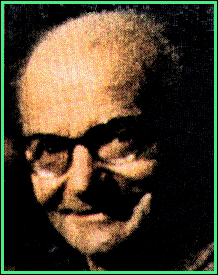

![]()
�


![]()
�
His life was most fully creative during the years when he was writing the scores of the Simphony. Kozina's compositions have a common language, whitch is a most original blending of late-romantic and neo-classicist elements. However, what is a most important would seem to be a harmony of the aestetic and ethical creative stimuli, whitch is particulary bright feature of Kozina's legacy.
The year 1939 marked the beginning of the composer's upsurge of creativity; it was then he wrote the "Ballads of Petrica Kerempuh" and the cantata "Lovely Vida", then in the wartime and postwar years the opera "Equinox", the four movements of the Symphony, as well as the orchestral work Davnina (Distant times), two ballet suites, choral pieces, songs and film music. Marjan Kozina was known as a promotor of musical events, the head of several institutions, and also as a writer and teacher; thus, the discovery of his complete creative output came as no small surprise to his contemporaries. Kozina's life for music was directed by two "fruitfull oppositions" - sharpness of thought and emotional involment.
Those two oppositions - if indeed they are oppositions - were like a hint of the fate already embodied in the composer's teachers, the first organist I. Hladnik in his native Novo mesto, then Joseph Marks at Vienna, known as a strict contrapunctalist. Then in Prague, Marks's role as teacher was taken over by an utterly different person, Joseph Suk, one of the last exponents of the romantic sentiment. Suk was no doubt close to young Kozina, particularly when when he revealed his other side: the homorous vein. The opinion which Marks had given of his pupil was: "He is an exceptionaly telented and highly intelligent young amn who works assiduosly and writes most sensibly."
The most popular Kozina's compositions are his "Symphony" in four movements (Mound Ilova, To the fallen, White Country and Towards the Sea) and the opera "Equinox". All movements of the Symphony are independently structured, and may also be revived in this form. "Ilova gora - Mount Ilova" is a portrayal of a battle which the composer himself experienced in 1943, whilw "Padlim - To the fallen" is a hymnic ellegy in honour to all victims of a war, with elements of a marche funebre. "Bela Krajina - White Country" is a trullybright reflection of the region and its people. The shrieking opening is the reflection of joyous personal experience, while the "subjective" daring of the lyrical flight in the central part somehow out into a more rounded folcloric motif. "Proti morju - Towards the sea" provides release and relief from the tension of the first movement. The Symphony is, then, a monumental tonal allegory of its exstra-musical evocations, and a complete shaping of the basic aspects of the compositional desires and possibilities.
Kozina himself wrote the libreto for opera "Equinox" based on the play from Ivo Vojnovic. The story deals with common life in outskirts of Dubrovnik around 1860, a period when Dalamtians were widely emigrating overseas. "Equinox" is ronded-off and complete musical work for the stage. It contains strong elementary scenes: passion, amorous distress, jealousy and vengeance.
Kozina wrote the music for the first slovene post-war film "Na svoji zemlji" ("On home land")
� � �
![]()
M u s i c a l s c o r e s
Drustvo slovenskih skladateljev